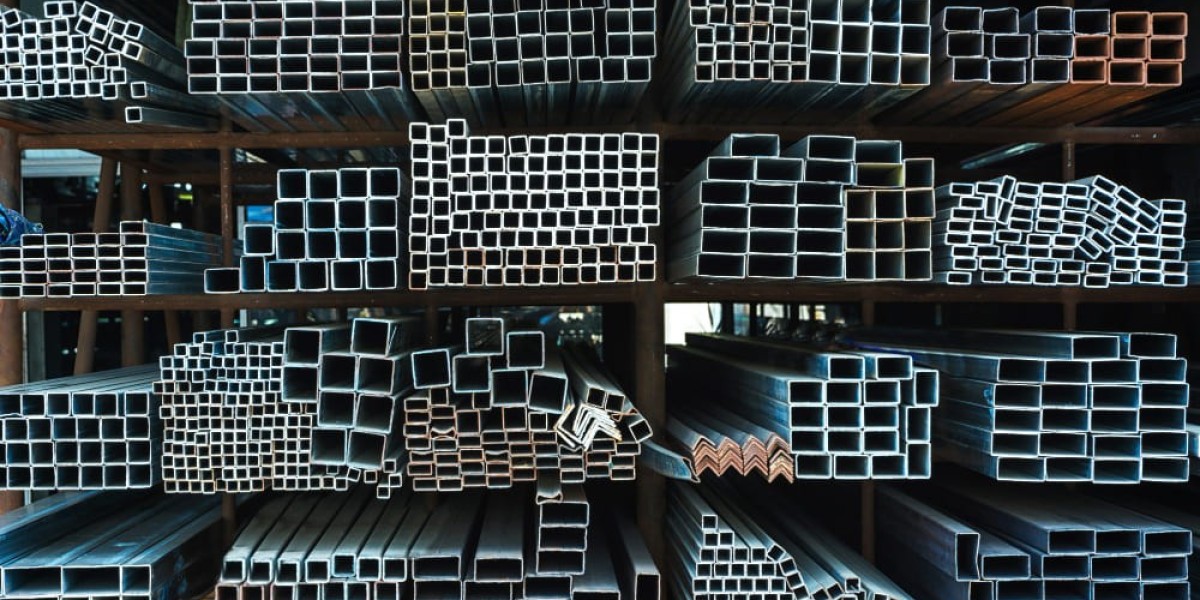Commodity prices are an essential driver of the global economy, affecting everything from consumer goods to industrial production. In particular, metal commodity prices are highly sensitive to changes in supply and demand, economic conditions, and geopolitical factors. This blog will explore how commodity prices impact metals and the broader implications for industries that rely on these raw materials.
Understanding Commodity Prices in the Metals Market
Commodity prices refer to the cost of raw materials, including metals, which fluctuate based on various factors. Metal commodity prices are critical for industries such as construction, automotive, electronics, and manufacturing, as metals are foundational to their production processes.
- Global Demand: As demand for metals rises, commodity prices tend to increase, especially for key metals like copper, aluminum, and steel.
- Supply Chain Disruptions: Events like natural disasters, geopolitical tensions, and pandemics can disrupt supply chains, causing metal commodity prices to fluctuate.
- Energy Costs: Since metal production is energy-intensive, changes in energy prices can directly impact commodity prices on metals.
- Government Policies: Tariffs, sanctions, and other regulatory measures can influence the cost and availability of metals in the market.
- Market Speculation: Traders in the commodities market often speculate on future metal prices, adding volatility to the pricing structure.
- Technological Advancements: New production methods or innovations that reduce the cost of extracting or recycling metals can lower commodity prices on metals.
The Role of Supply and Demand in Metal Commodity Prices
Supply and demand dynamics play a fundamental role in determining the price of metals in the commodity market. When demand exceeds supply, metal commodity prices rise, and when supply exceeds demand, prices tend to fall.
- Industrial Growth: Growing industries, particularly in emerging markets, drive higher demand for metals, increasing commodity prices.
- Mining Output: The availability of metals is largely dependent on mining activities, and any disruptions in mining can reduce supply and push up prices.
- Infrastructure Projects: Large infrastructure projects require substantial amounts of metals, contributing to the demand side of the equation.
- Recycling Efforts: Increasing the recycling of metals can alleviate the pressure on supply, potentially lowering commodity prices on metals.
- Seasonal Demand: Some metals see seasonal demand spikes, such as construction steel, which can influence prices temporarily.
- Economic Slowdowns: During recessions or economic slowdowns, demand for metals decreases, leading to lower commodity prices.
The Impact of Commodity Prices on Key Metals
Different metals are affected in unique ways by changes in commodity prices. Below are some key metals and how they respond to shifts in the commodity market.
- Copper: Widely used in electrical wiring and green technologies, copper’s price is highly sensitive to global economic health and infrastructure spending.
- Aluminum: Lightweight and versatile, aluminum is critical in the automotive and aerospace industries. Its price is affected by energy costs and production capacity.
- Steel: Heavily used in construction, steel prices are driven by global infrastructure projects and supply chain disruptions in key producing countries.
- Nickel: A key component in battery production, nickel prices have surged due to increased demand from the electric vehicle (EV) sector.
- Gold: Seen as a safe-haven asset during economic uncertainty, gold prices often rise when investors look to hedge against inflation and market instability.
- Platinum: With applications in automotive and chemical industries, platinum prices fluctuate with changes in industrial demand and mining output.
Commodity Price Volatility and Its Effect on Metal Markets
Volatility in commodity prices can significantly impact the metal markets, affecting producers, consumers, and investors alike.
- Price Swings: Sudden changes in commodity prices on metals can lead to increased costs for manufacturers, who rely on stable prices for budgeting.
- Hedging Strategies: Companies often use futures contracts or other financial instruments to hedge against volatility in metal commodity prices.
- Investor Behavior: Volatility in commodity prices can attract speculative investors, adding to market instability as they attempt to profit from price swings.
- Production Costs: Metal producers face higher production costs when commodity prices rise, which can affect their profitability and pricing strategies.
- Export and Import Dynamics: Countries that export metals may see higher revenues when commodity prices are elevated, while importing countries may struggle with higher costs.
- Supply Chain Adaptation: Manufacturers may shift to alternative materials or suppliers when metal prices become too volatile, which can affect long-term market trends.
How Commodity Prices on Metals Affect Industries
The impact of metal commodity prices is felt across multiple industries, from construction to consumer electronics. Understanding these effects is crucial for companies that rely on metals as key inputs.
- Construction: Higher metal commodity prices, particularly for steel and aluminum, can increase the costs of building projects, affecting budgets and timelines.
- Automotive: Car manufacturers rely heavily on metals like aluminum and steel. Rising prices can force them to increase vehicle prices or reduce profit margins.
- Electronics: Precious metals like copper and gold are integral to electronic components. Any rise in commodity prices can lead to higher production costs for consumer electronics.
- Energy Sector: The renewable energy sector depends on metals like lithium and copper for batteries and solar panels. Higher commodity prices can slow the adoption of clean technologies.
- Aerospace: Aluminum and titanium are essential in aircraft manufacturing. Increased commodity prices can raise production costs, impacting airline profitability.
- Manufacturing: General manufacturing, which uses a wide array of metals, must continuously adapt to fluctuations in commodity prices to maintain profitability.
Geopolitical Influence on Metal Commodity Prices
Geopolitical events often profoundly affect commodity prices, especially in the metals market. These events can cause sudden shifts in supply and demand, leading to price volatility.
- Trade Wars: Tariffs imposed during trade disputes can increase metal costs, particularly in key trade relationships like the U.S. and China.
- Sanctions: Sanctions on metal-producing countries can disrupt global supply chains, reducing the availability of certain metals and driving up prices.
- Regional Conflicts: Wars or conflicts in metal-rich regions can limit mining activities, causing shortages and higher metal commodity prices.
- Political Instability: Countries with unstable political environments may struggle to maintain consistent metal production, leading to unpredictable commodity prices.
- Resource Nationalism: Some governments prioritize domestic use of their metal resources, limiting exports and tightening global supply.
- Environmental Regulations: Stricter regulations in metal-producing regions can increase production costs, affecting global commodity prices on metals.
The Role of Speculation in Metal Commodity Prices
Speculation plays a significant role in determining commodity prices for metals, as traders and investors bet on future price movements based on various market factors.
- Market Sentiment: Traders’ perceptions of the future can heavily influence metal commodity prices, sometimes causing prices to rise or fall irrespective of supply and demand fundamentals.
- Futures Contracts: Speculators use futures contracts to bet on whether the price of metals will rise or fall, contributing to short-term price volatility.
- Hedge Funds: Large institutional investors, like hedge funds, often engage in metal commodity speculation, which can drive prices higher or lower depending on market sentiment.
- Short-Selling: Speculators who believe metal prices will drop may short-sell metals, which can lead to price drops in the broader market.
- Global Economic Data: Economic reports, including GDP growth and industrial production numbers, often fuel speculation on commodity prices, influencing market trends.
- Inflation Hedging: Metals, particularly gold, are commonly used to hedge against inflation, with investors speculating on price increases during inflationary periods.
Long-Term Outlook for Metal Commodity Prices
Looking ahead, metal commodity prices are expected to continue fluctuating based on global demand, technological advancements, and geopolitical shifts. However, some long-term trends will likely shape the future of the metal market.
- Renewable Energy Growth: As renewable energy adoption grows, demand for metals like copper, lithium, and aluminum will rise, potentially increasing commodity prices.
- Urbanization: Ongoing urbanization in developing countries will drive sustained demand for metals used in construction and infrastructure.
- Recycling Advancements: Technological advancements in metal recycling may help alleviate pressure on raw material supply, stabilizing commodity prices over time.
- Green Technologies: The push for sustainable practices in metal production, including green steel and eco-friendly mining, may drive up costs in the short term but stabilize the market in the long run.
- Shifts in Global Trade: Changes in trade policies and global alliances could reshape the flow of metals, influencing long-term commodity prices on metals.
- Digital Transformation: The continued integration of technology into metal markets, such as blockchain for supply chain transparency, could increase efficiency and reduce price volatility.
Conclusion: Navigating the Impact of Commodity Prices on Metals
The impact of commodity prices on metals is far-reaching, influencing industries, economies, and global trade. As demand for metals continues to grow, businesses and investors must stay vigilant in monitoring price trends and market drivers. By understanding the various factors that affect metal commodity prices, stakeholders can better position themselves to navigate the complexities of this critical market.
To Get Real-Time Prices of Commodities Visit: https://pricevision.ai
Source: https://diigo.com/0xlc3a








